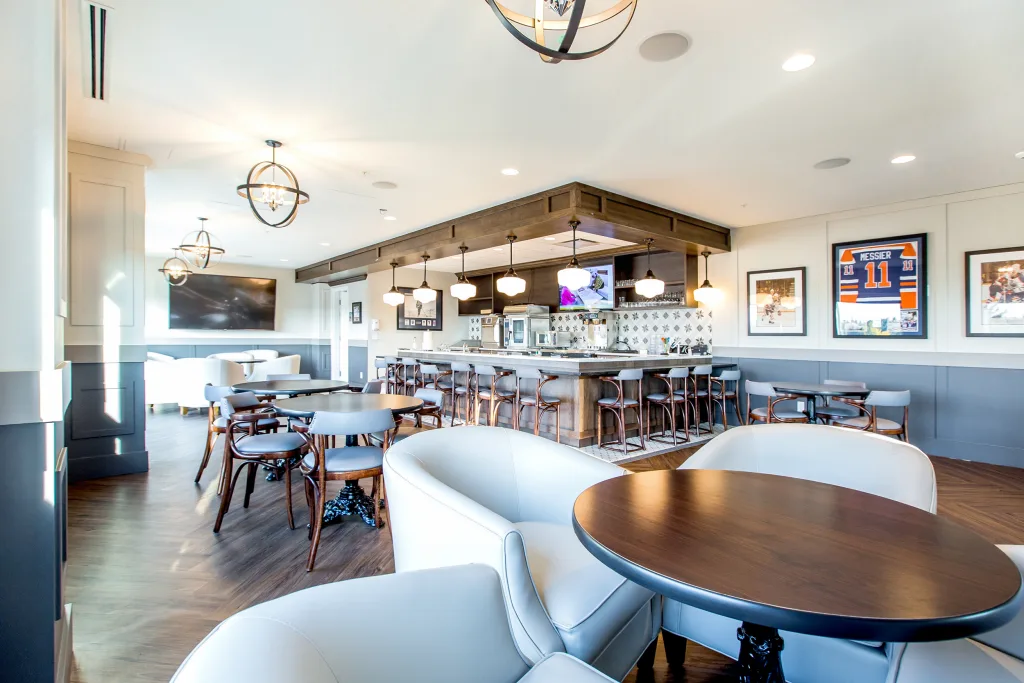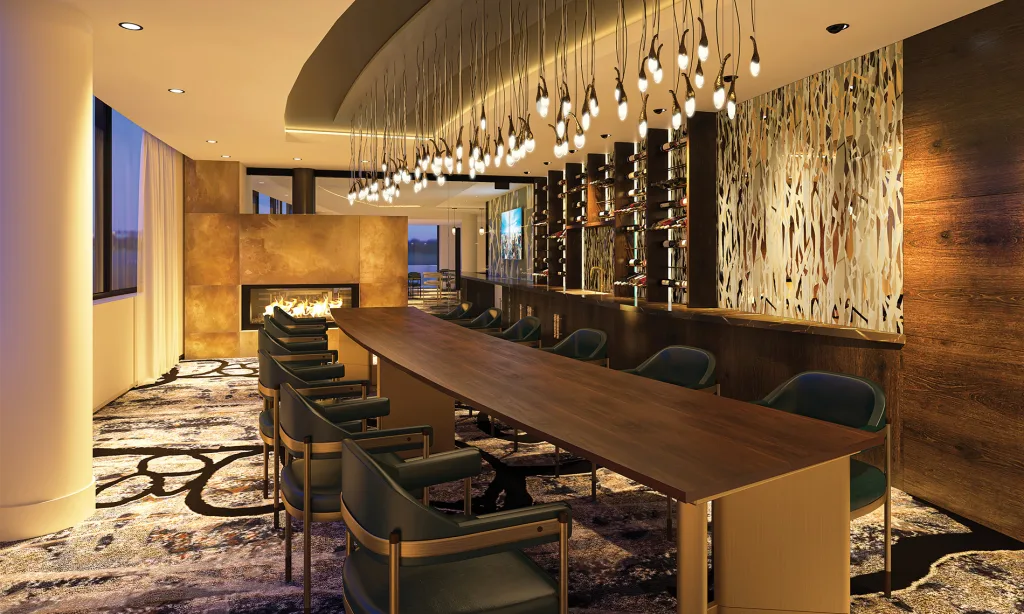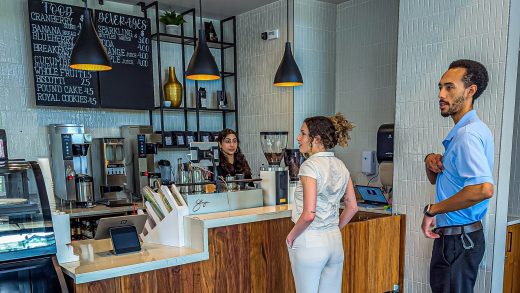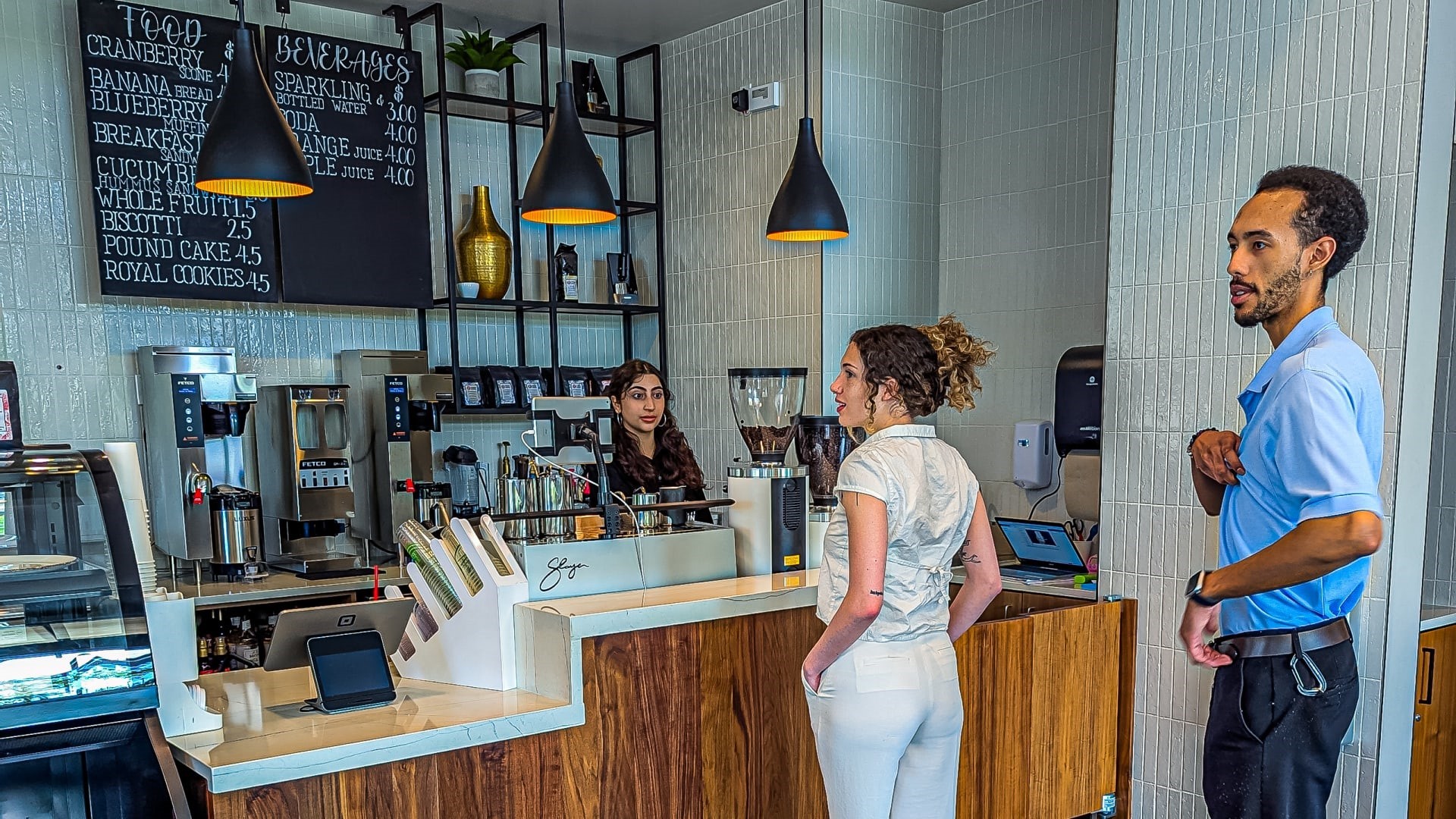With cafes and restaurants, senior housing is opening itself up to the public
With cafes and restaurants, senior housing is opening itself up to the public
Public-facing amenities at assisted living facilities are connecting seniors to their wider communities.
BY Nate Berg
The North of Main Cafe in Bellevue, Washington, has all the trappings of a typical urban coffee shop: a high-end espresso machine, a pastry case stocked with scones, and patio seating on the sidewalk. It’s the kind of place where friends might meet to chat over lattes or a remote worker might go to get a little laptop time.
What’s odd about this coffee shop, and what’s not outwardly obvious, is that it’s actually part of a senior living facility. While the shop has a conventional storefront and entrance from the street, it also has a nondescript door inside that connects directly to the Watermark at Bellevue, a mid-rise tower with 110 units of assisted living residences, 26 units of memory care facilities, and other services focused on the needs of senior citizens. The cafe and a recently opened ground floor restaurant in a nearby independent living building, are among a new class of amenities in senior living facilities that serve both residents and the general public.
“It really gives the ability for the current residents to be able to interact, and have the privilege of still standing in line at a coffee shop, still being around people activating space,” says Shawn Jervis, campus executive director of the Watermark at Bellevue, one of 70 senior living communities around the U.S. operated by Watermark. “It’s a block away from a new light-rail station, and we have a bunch of apartment buildings next door to us. So we’re looking forward to the everyday person walking in and grabbing their cup of coffee.”

A new form of senior living
This mix of senior living and public-facing amenities is a new take on a type of housing that is often devoid of the everyday person. Age-restricted housing and senior care facilities are siloed spaces filled primarily with old people, a homogenous setting that can exacerbate the social isolation many older people experience. Opening up spaces for nonresidents—particularly younger people—is increasingly a goal for the designers and operators of housing meant for senior citizens. The Watermark’s modest cafe is part of a growing trend of senior-centric facilities that are trying, and sometimes succeeding, at being places fit for any age.
Multigenerational living and intergenerational interaction are increasingly seen as socially beneficial. A 2022 report from the American Planning Association highlights the importance of intergenerational communities, arguing that simply increasing the amount of access between different age groups can cut down on ageism, social isolation, and depression.
But the built environment has been slow to catch up. The Urban Land Institute recently published a report showing that while the number of multigenerational households has quadrupled in the U.S. since the 1970s, housing and neighborhoods tend to be designed only for specific, and sometimes highly restrictive, age groups.
“Housing needs to be designed to meet the needs of people at different life stages and abilities,” says Matt Norris, senior director for the Randall Lewis Center for Sustainability in Real Estate at the Urban Land Institute and one of the report’s authors. Building more third places, like cafes and restaurants, can encourage more multigenerational use and social interaction. “Public-facing amenities can be an important part of the equation with benefits for project success and quality of life for older adults,” he says.
These ideas are starting to make their way into the designs of senior living facilities like those run by Watermark as well as social and market rate housing that has no intentional focus on older adults. The Canadian architecture and urban planning firm Dialog has been designing public-facing amenities and multigenerational assets within its projects in recent years, and finding different ways to accommodate the specific needs of aging adults while also allowing social interaction and urban activity that’s not age dependent. One project in Calgary added a cafe and public park to a senior living campus, while also carving out space for future student housing on the site. Another project, a senior living tower in Edmonton, was designed with public-facing ground floor retail and a cafe.
“You have to think about the whole neighborhood as an amenity. Not everything can be provided in one building. And people aren’t just going to stay in their building. It’s about everything else,” says Amit Price Patel, a partner and urban designer at Dialog.

Building social connection
Creating space for these kinds of interactions has proven successful for Watermark. In a senior living community it operates in Brooklyn, flexible and publicly accessible spaces have become active sites of social and neighborhood interaction. Opened in 2020, the facility was designed with a few features that were intended to do the double duty of appealing to residents and bringing in outsiders. An art gallery on site hosts regular exhibitions by artists from outside the community, and a theater space inside hosts performances and rehearsals for local musical groups.
“It’s great for the residents because there’s all types of interesting people that come through the community. There’s children. Talented artists are showcasing their art,” says Jen Tapner, executive director of the Watermark at Brooklyn Heights. “It exposes the residents and the community to one another where they might not have had the opportunity to do so.”
In June, the senior living facility expanded its public-facing amenities with a new cafe, Willow and Clark, which, like the cafe in Bellevue, looks like any other urban coffee shop. Tapner says the hope is the cafe will be a draw for residents and members of the surrounding community, giving seniors an easily accessible place to participate in the everyday activity of the neighborhood. They plan to host children’s story time in the space, with readings by residents.
“For the community, social life is critically important,” Tapner says. “Seniors want to feel like they’re part of a larger community, and many of our residents live here because they want to be part of vibrant New York City life.”
That’s even led to some unexpected public uses of the facility. Tapner says residents themselves have suggested ways for their amenities to do more than just serve the seniors who live there. One resident has grandchildren who attend a nearby school and inquired about them using the facility’s swimming pool. Now there’s a summer swim camp that uses the pool regularly. It helps the kids have a place to swim but also brings a much younger demographic into the space. “The residents come up with interesting ideas all the time and we fully embrace them,” Tapner says. “We want to give our members opportunities to socialize with other generations.”
ABOUT THE AUTHOR
Fast Company
(9)



